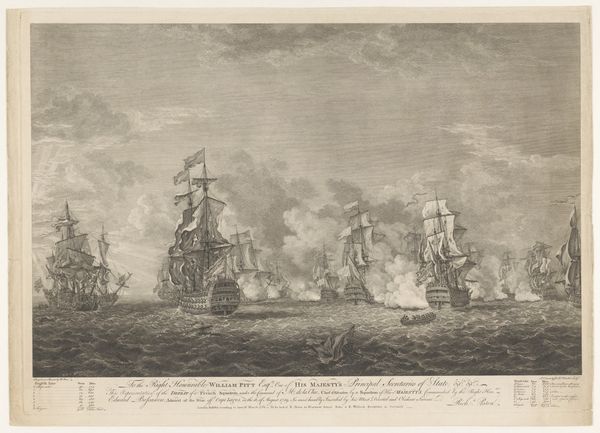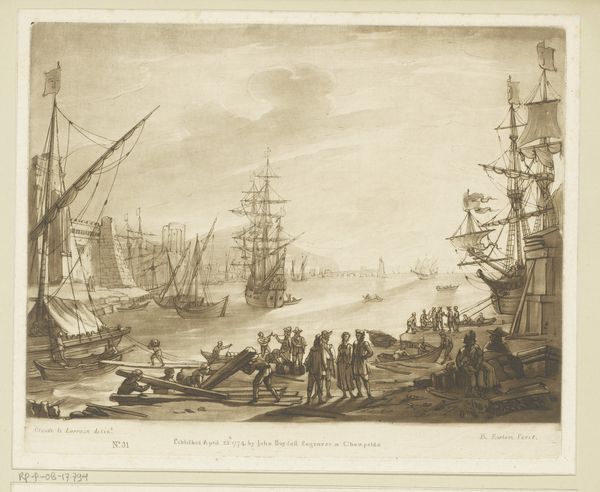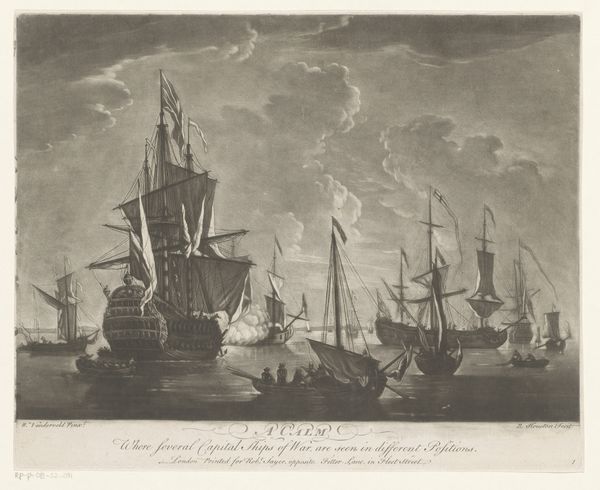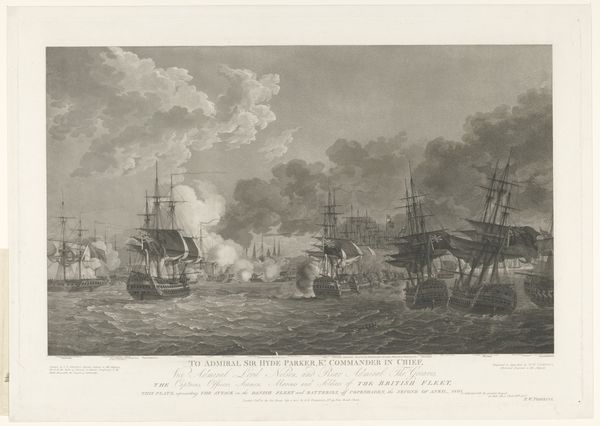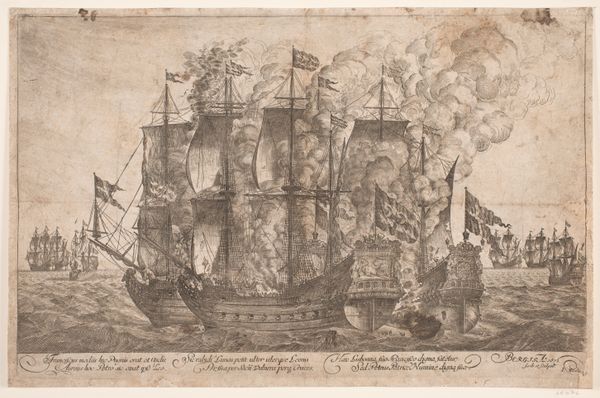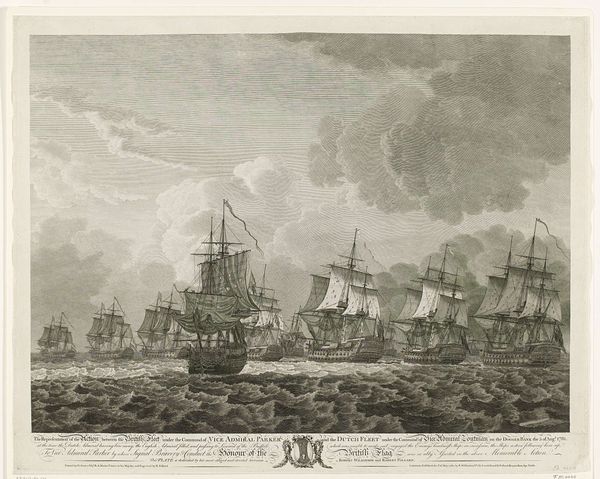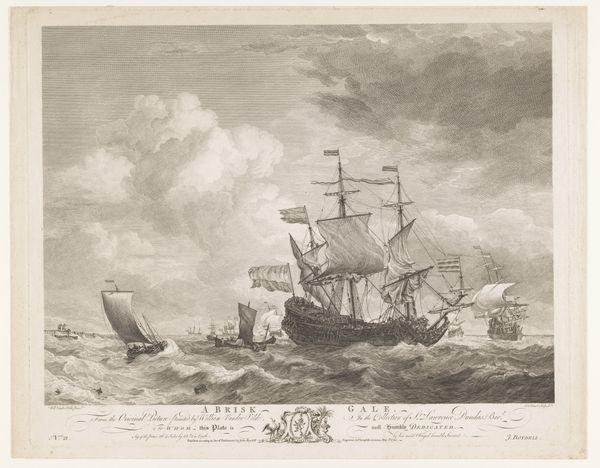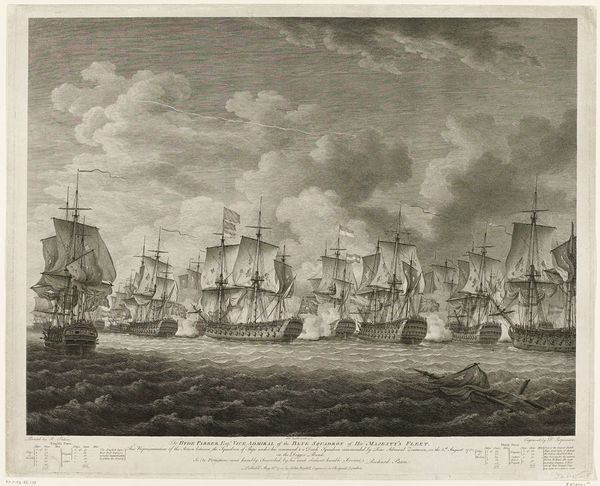
Dimensions: height 430 mm, width 625 mm
Copyright: Rijks Museum: Open Domain
Editor: Here we have an engraving, "Franse en de Engelse vloot tijdens een zeeslag," dating probably from 1762-1765. It depicts a naval battle, and I find the overall scene quite chaotic. What do you see in this piece? Curator: I see the visual language of power and dominance being meticulously constructed. Notice how the ships aren’t merely vessels, but are practically anthropomorphized. They bristle with aggression, a cloud of smoke clinging to them like a dark aura. These ships embody the ongoing conflict between nations, where victory is more than just a military achievement—it’s a statement about cultural identity and strength. Look at how the billowing sails and swirling waves contribute to a feeling of almost operatic drama. What do these kinds of theatrics tell us about how war was perceived and memorialized at this time? Editor: I hadn't thought of it as operatic. More like... documentary? A record of a specific event. Curator: But is it truly a neutral record, or a carefully crafted narrative? Consider the title itself; "Franse en de Engelse vloot tijdens een zeeslag", implying conflict. But the perspective and composition likely favors one side. Visual memory often favors the victor's perspective. Look closely: are the French ships given equal visual weight, or do the English ones dominate the scene, looming larger in our view? Editor: I see what you mean. The English ships do seem more prominent. It is quite striking, now that I notice it, actually! Curator: Exactly. And even details such as billowing smoke carry symbolism – power and victory! Recognizing these symbolic constructs helps us see beneath the surface. Editor: That makes perfect sense! Thanks. I learned to look past face value into symbolic constructs that make cultural perception biased. Curator: Absolutely! And it shows how even seemingly straightforward depictions can be deeply coded with meaning.
Comments
No comments
Be the first to comment and join the conversation on the ultimate creative platform.
